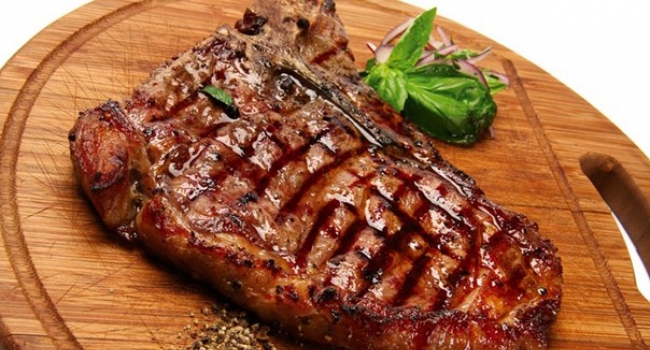- Latest news▼
-
18:00, April 18 Daily Mail: Elderly woman in China gets infected with brain-eating amoeba

-
14:19, April 18 Obesity: exercising before breakfast helps you lose weight faster

-
10:42, April 18 The Conversation: childhood trauma can cause pathological hoarding

-
08:37, April 18 Daily Mail: Satiating food reduces cravings for sweets, nutritionist says

-
18:22, April 17 First Armenian-German Conference entitled “Heart Failure Spring School”

-
08:38, April 17 Why do kids usually recover from COVID-19 more easily than adults?

-
14:37, April 16 Daily Mail: intermittent fasting is not suitable for children and women before their periods

-
16:41, April 15 Cell: in carriers of defective BRCA2 gene, sugar consumption increases cancer risk

-
15:04, April 15 305 cases of measles recorded in Armenia so far in 2024

-
14:38, April 15 Food and Environmental Virology: tea contributes to effective coronavirus control

-
12:41, April 15 Daily Mail: vitamin A, B3 and E supplements can be dangerous

-
10:56, April 15 Diabetes Care: evening physical activity is good for the heart

-
08:27, April 15 Women are more susceptible to blood loss and death during bypass surgery than men, researchers say

-
18:42, April 13 WHO: Nigeria pioneers revolutionary meningitis vaccine

-
16:43, April 13 One-third of women experience menstruation-related migraines, most often during premenopause - study

All materials
Grilled meat, chicken ups risk of type 2 diabetes in U.S. adults

Open-flame and/or high-temperature cooking methods (such as grilling/barbecuing, broiling, or roasting) to prepare chicken and red meat are associated with an increased risk of type 2 diabetes (T2D), according to a study published online March 12 in Diabetes Care.
Gang Liu, Ph.D., from the Harvard T.H. Chan School of Public Health in Boston, and colleagues examined the correlation between open-flame and/or high-temperature cooking and doneness preferences for red meat, chicken, and fish in relation to T2D risk in U.S. adults who consumed more than two servings of animal flesh per week. Data were included for 52,752 women from the Nurses' Health Study (NHS), 60,809 women from NHS II, and 24,679 men from the Health Professionals Follow-Up Study.
During 1.74 million person-years of follow-up, the researchers documented 7,895 incident cases of T2D. Higher frequency of open-flame and/or high-temperature cooking was independently associated with an elevated T2D risk after adjusting for multiple variables, including baseline body mass index and total consumption of red meat, chicken, and fish. The pooled hazard ratio of T2D was 1.28 when comparing open-flame and/or high-temperature cooking used >15 times a month versus less than four times a month. The pooled hazard ratio for T2D was 1.20 when comparing the extreme quartiles of doneness-weighted frequency of high-temperature cooking. The correlations remained significant when chicken and red meat were assessed separately.
"Independent of consumption amount, open-flame and/or high-temperature cooking for both red meat and chicken is associated with an increased T2D risk among adults who consume animal flesh regularly," the authors write.
Several authors disclosed financial ties to the nutrition industry.
Follow NEWS.am Medicine on Facebook and Twitter
- Related News
- Daily Mail: Satiating food reduces cravings for sweets, nutritionist says The specialist explained that often the great inclination towards sweets is caused not only by psychological hunger, but also by physiological (real) hunger…
- Daily Mail: intermittent fasting is not suitable for children and women before their periods Children and teenagers should stay away from it, because their bodies (especially bones) are still growing and developing...
- Food and Environmental Virology: tea contributes to effective coronavirus control According to the scientists, the teas inactivate SARS-CoV-2 in saliva...
- AJCN: Sugar in bread, rice, pasta can cause insomnia in women, study finds As researchers point out, the refined sugar in such foods may be to blame for sleep problems...
- Food Bioscience: dark chocolate supports growth of beneficial gut bacteria This positive effect can be enhanced by adding probiotics...
- Video
- Event calendar
- Archive
- Most read
month
week
day
- Pediatrics: Hypoglossal nerve stimulation implant helps with sleep apnea 1361
- Health minister: Simulation educational center will be created, assisted reproductive technology capacity will increase in Armenia 1317
- WHO: Nigeria pioneers revolutionary meningitis vaccine 1169
- One-third of women experience menstruation-related migraines, most often during premenopause - study 1136
- Women are more susceptible to blood loss and death during bypass surgery than men, researchers say 949
- Daily Mail: vitamin A, B3 and E supplements can be dangerous 926
- Food and Environmental Virology: tea contributes to effective coronavirus control 926
- Cell: in carriers of defective BRCA2 gene, sugar consumption increases cancer risk 898
- 305 cases of measles recorded in Armenia so far in 2024 890
- Diabetes Care: evening physical activity is good for the heart 880
- Daily Mail: intermittent fasting is not suitable for children and women before their periods 704
- First Armenian-German Conference entitled “Heart Failure Spring School” 497
- Why do kids usually recover from COVID-19 more easily than adults? 368
- Obesity: exercising before breakfast helps you lose weight faster 351
- The Conversation: childhood trauma can cause pathological hoarding 345
- Find us on Facebook
- Poll





